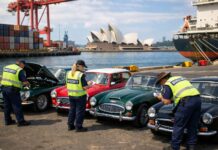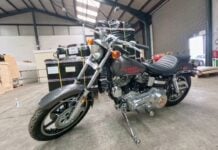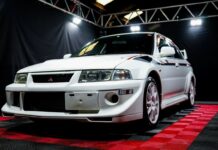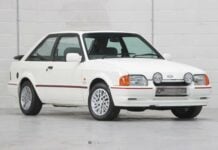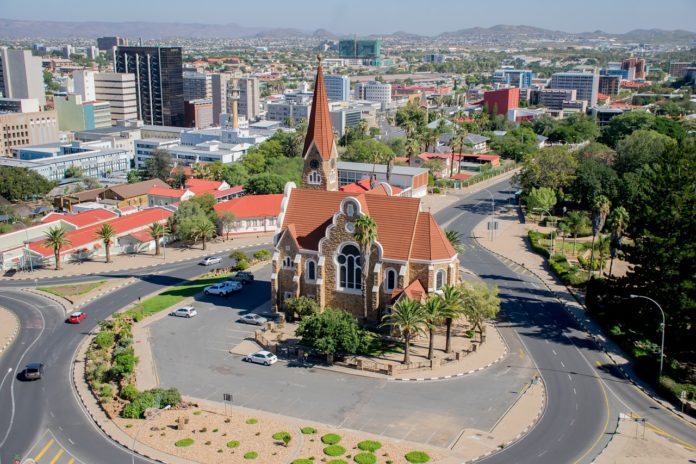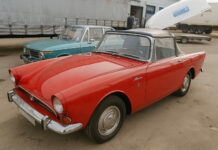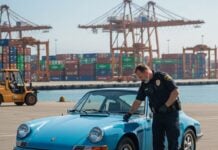According to the Namibian tourist board, one of the most common questions they get asked is “Is it safe to drive there?”. So here’s the good news: yes, it is. Namibia may share a land border with South Africa, but it thankfully doesn’t have anything like as high a crime rate, and short of taking the sort of sensible, basic precautions you’d take anywhere, drivers in the country have little to fear.
Road conditions, the country’s sheer size and the abundance of wildlife all pose particular challenges to those used to UK roads, of course. But safety is one thing you needn’t worry about unnecessarily. Language is another because all street signs are in English.
Driving Basics
To drive in Namibia you’ll need to be at least 18 years old and in possession of a full driving licence. If your licence isn’t printed in English, then you’ll also need an International Driving Permit. As ever, you should make sure you keep your licence(s), passport and insurance documents with you at all times when driving. If you’re looking to hire a car, then you’ll find most companies will only rent to those over 23 or even 25, though some may rent to younger drivers if they pay a surcharge.
Speed Limits and Seatbelts
Namibians drive on the left. Speed limits correspond with what you’ll find in other countries, being generally around 60km/h (37mph approx) in built-up areas, 80km/h (50mph approx) on gravel roads and 120km/h (75mph approx) on major tarred roads – there are no motorways in Namibia.
Drivers and passengers are required to wear a seatbelt, but there are no official rules regarding child safety or booster seats – though these are always a good idea anyway. If you hire a car, they will generally have such safety devices available for your use.
Mobile Phones and Drink-driving
Using a mobile phone while driving is prohibited by law. Drink-driving is also very much frowned upon, with an acceptable blood alcohol limit of just 0.037%, lower than the international standard of 0.05% and far lower than the UK’s 0.08%. So sticking to soft drinks if you’re planning to get behind the wheel is strongly advised.
If you do manage to fall foul of the law in any way, the UK Foreign Office provides a list of English-speaking lawyers in Namibia, which you can find here.
Safety and Security
As stated above, crime is not rife in Namibia but incidents can occur. With that in mind, be sure to take sensible precautions such as locking your car doors, not leaving valuables in your vehicle and avoiding parking on dimly-lit back streets. Picking up hitchhikers is not encouraged as carjackings, though rare, have been known.
Tourist muggings can be a problem, however, particularly in Windhoek and in township areas, so keep your wits about you when on foot and avoid wandering around alone at night. If you need a taxi, get your hotel or restaurant to book one for you – don’t just flag one down in the street, as rogue operators are quite common.
Road Conditions
Outside of the capital Windhoek and other big towns, many of Namibia’s roads are untarred and made instead of gravel. This means there is a greatly increased risk of getting a puncture, so you should make sure you always have TWO spare tires with you, just in case. Gravel roads also tend to deteriorate in wet conditions and can be treacherous, so always remember that the 80km/h speed limit is a maximum – not obligatory!
For this reason, many tourists and residents in Namibia tend to opt for a 4×4 vehicle. This will certainly enable you to travel places you might not be able to in a two-wheel-drive vehicle because Namibia has many unmade roads, but if you’re only visiting major towns and/or tourist hotspots, then a 4×4 is not strictly necessary.
Given the country’s size, journeys can be quite long (both geographically and, due to the roads, time-wise) compared to driving in Europe. As such you should take the usual precautions of having warm clothes, a blanket and some food/drink in the car, taking regular breaks to prevent fatigue and researching the whereabouts of petrol stations before you set off on your journey. Bear in mind that you’ll need cash for the latter.
Speaking of which, Namibian petrol stations are not self-service, so sit back and enjoy the luxury of having someone else fill up your tank and check your oil, water and tyres for once – but be ready with a tip once they’ve done so. Around N$5-N$10 is the usual rate for this.
Mind the Wildlife
Namibian drivers are known in Africa for their courtesy, and for largely obeying speed limits. As a result, one of the primary causes of accidents in the country is the local wildlife, which can stray onto the road unexpectedly at any time. For this reason, driving after dusk has set in is generally not recommended, particularly in rural areas. Bear in mind, too, that local workers will often be walking along the side of the road, and with no street lighting it’s hard to spot them – so if you do venture out at night, keep your headlights on full beam.
Overall, driving in Namibia will be quite a different experience from driving in Europe, certainly. But it needn’t be a daunting or scary prospect – and the country has so much to offer in terms of wildlife and scenery, it would be a great shame to miss it while you’re there!
If you are shipping your car to Namibia, please contact us here at Autoshippers for a car shipping quote and details of our services.


